From Kathmandu: Everest Base Camp Trek 11 Nights/12 Days
As the sun rises over the bustling city of Kathmandu, travelers gather their gear, ready to embark on the journey of a lifetime. The Everest Base Camp Trek beckons with promises of breathtaking landscapes and a sense of accomplishment like no other.
But what lies beyond the city’s edge is a tale of resilience, discovery, and the allure of reaching new heights. The 11 nights and 12 days ahead offer a glimpse into a world where every step taken is a step closer to the roof of the world.
Key Points
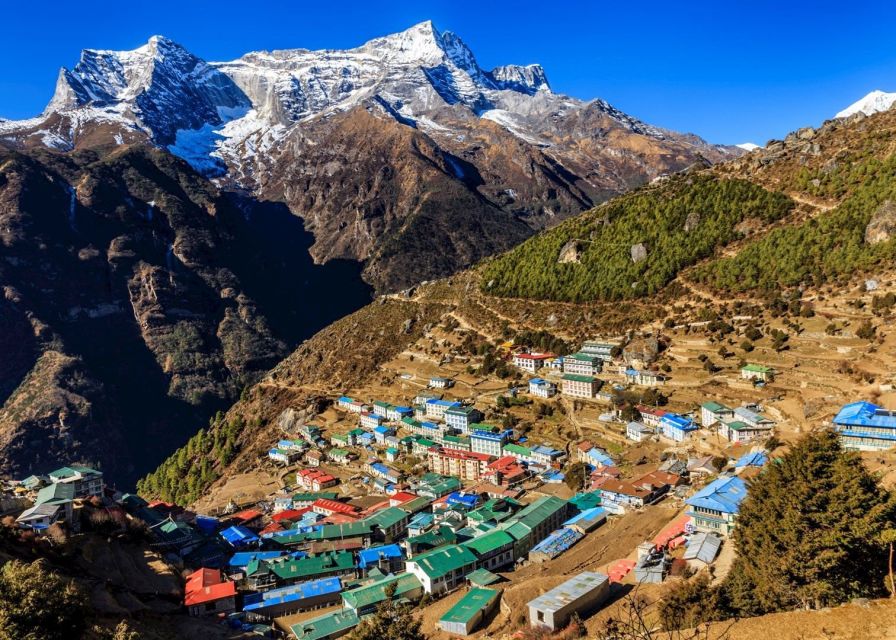
- Explore rugged landscapes and Sherpa villages on an 11-night trek from Kathmandu.
- Prepare with essential gear like hiking boots and a sleeping bag for varied terrains.
- Acclimatize wisely with gradual ascent, rest days, and hydration for high altitudes.
- Optimal times for the trek are spring and autumn, ensuring a safe and rewarding journey.
Trekking Route Overview
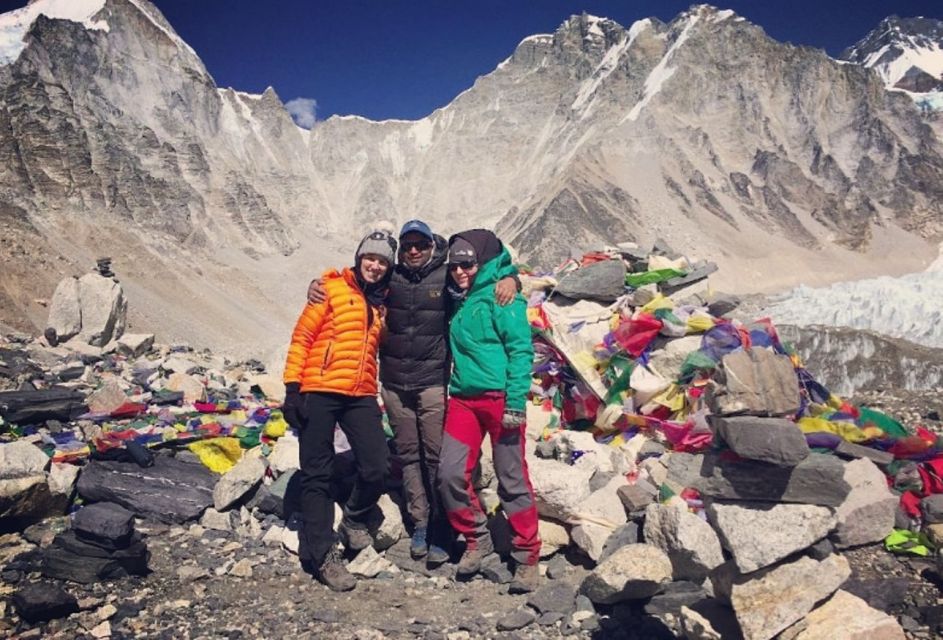
Set out on a journey through the rugged landscapes and breathtaking vistas of the Everest Base Camp Trek, where every step unveils the essence of adventure and exploration.
The route highlights include passing through picturesque Sherpa villages like Namche Bazaar, the gateway to the high Himalayas, and the serene Dudh Koshi River Valley.
Trekking challenges await as you ascend to higher altitudes, facing steep inclines and possibly dealing with altitude sickness. The trail offers a mix of terrains, from rocky paths to icy glaciers, providing a diverse and challenging experience.
As you trek towards the base camp, each turn brings new panoramas, with towering peaks like Mount Everest coming into view, rewarding your efforts with awe-inspiring sights that make every challenge worthwhile.
Essential Packing List
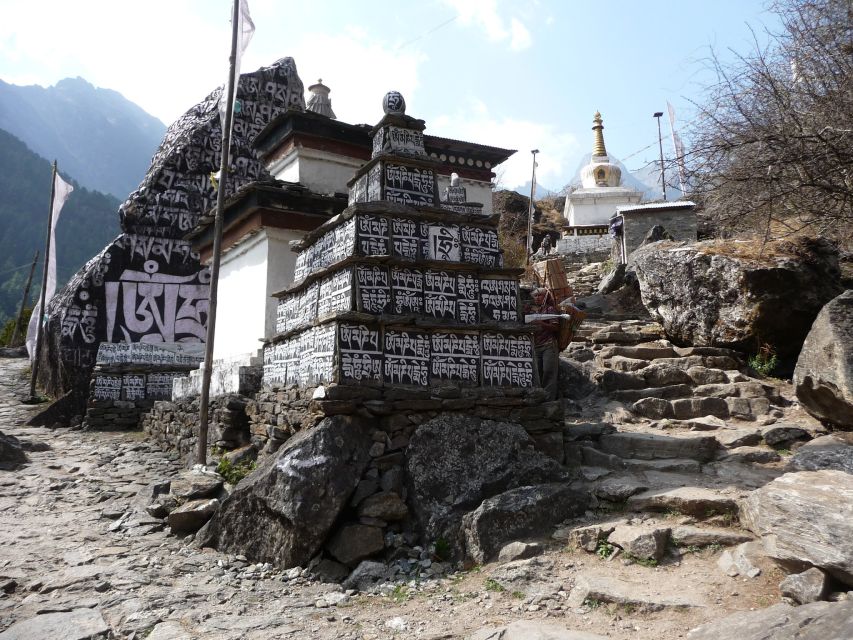
Prepare for your Everest Base Camp trek with a meticulously curated list of essential items to ensure a safe and memorable journey amidst the Himalayan landscapes.
Packing essentials like a sturdy backpack, comfortable hiking boots, moisture-wicking clothing, and a warm sleeping bag are crucial. Plus, gear recommendations include trekking poles, a headlamp, sunglasses, and a refillable water bottle to stay hydrated.
Don’t forget health precautions; consult a healthcare provider for altitude sickness medication advice and pack a first aid kit with essentials like bandages, pain relievers, and blister pads. Prioritize your well-being by packing wisely to fully enjoy the breathtaking views and challenging trekking experience ahead.
Acclimatization and Altitude Tips
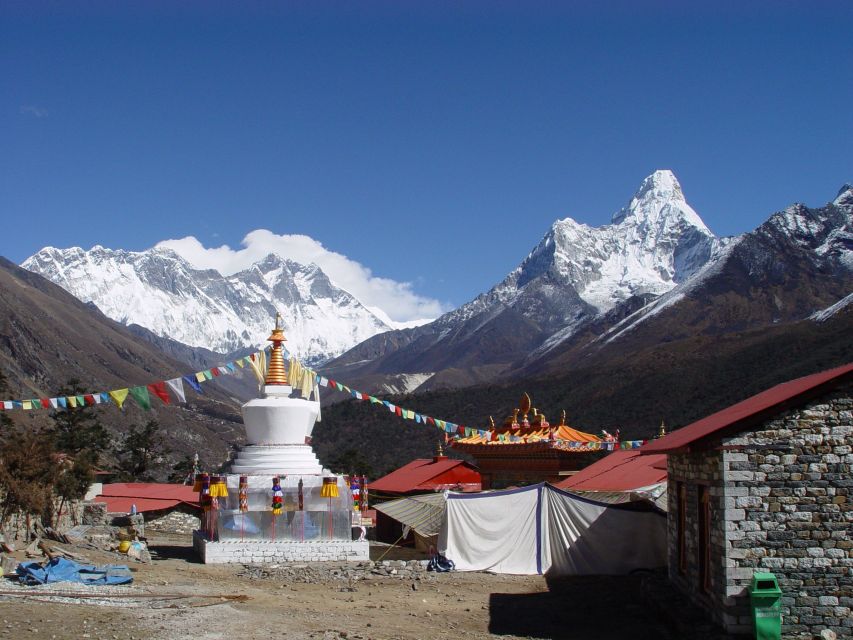
To acclimate effectively to higher altitudes during the Everest Base Camp trek, travelers should prioritize gradual ascent and proper hydration to minimize the risk of altitude-related issues. Acclimatization strategies involve taking rest days to allow the body to adjust to the decreased oxygen levels. It’s crucial to listen to your body, as altitude sickness can affect anyone regardless of fitness level.
Training tips beforehand can include cardiovascular exercises to improve oxygen utilization. Staying hydrated is essential to maintain proper oxygen levels in the body. Plus, consuming foods rich in carbohydrates and avoiding alcohol can aid in the acclimatization process.
Tea House Accommodations Guide
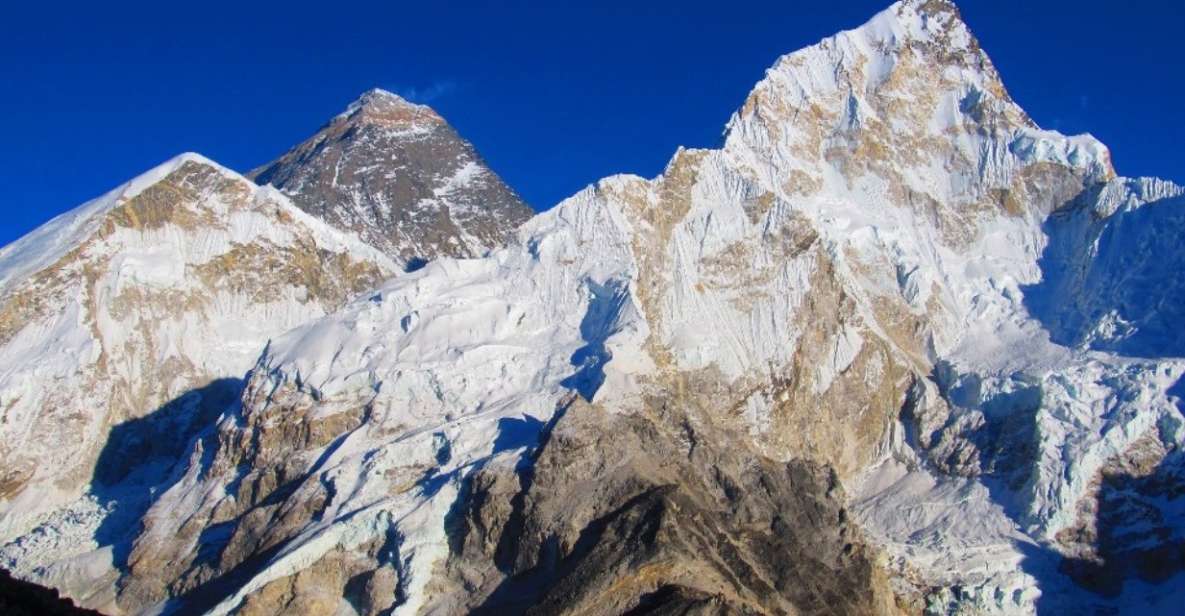
Nestled amidst the rugged Himalayan terrain, the tea houses along the Everest Base Camp trek offer trekkers a cozy sanctuary to rest and recharge after each day’s exhilarating journey.
Tea House Accommodations Guide:
-
Tea House Amenities:
- Basic rooms with cozy bedding
- Common dining areas for socializing
- Hot showers available for a fee
- Charging stations for electronics
-
Local Cuisine Experience:
- Indulge in traditional Nepali dishes
- Try local teas like butter tea
- Enjoy freshly prepared meals daily
- Dietary restrictions can usually be accommodated
With welcoming atmospheres and hearty local cuisine, tea houses provide a memorable experience, allowing trekkers to enjoy the rich culture of the Himalayas.
Best Time to Embark on Trek
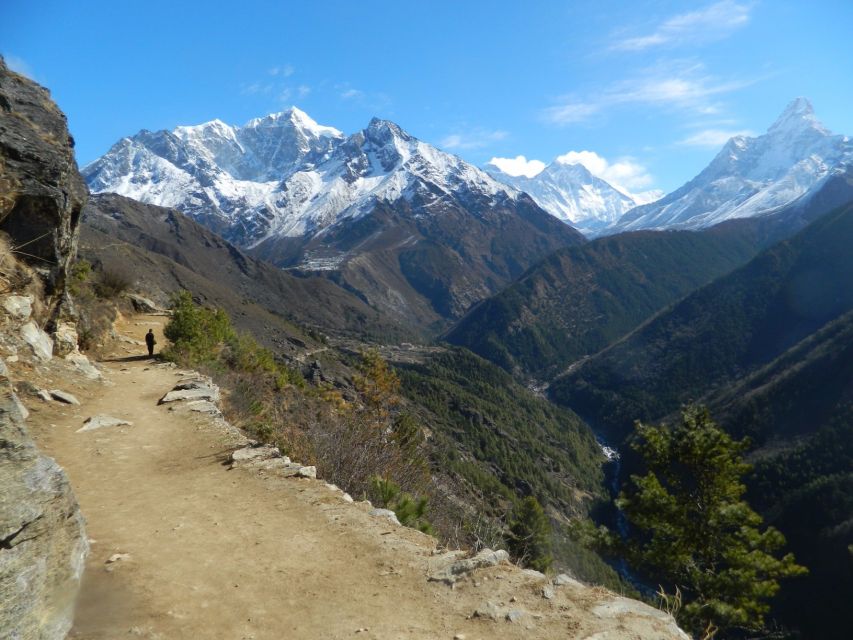
Amidst the cozy sanctuaries of tea houses along the Everest Base Camp trek, the best time to embark on this adventure awaits, offering optimal weather conditions for an unforgettable journey.
The ideal time to trek to Everest Base Camp is during the peak trekking seasons of spring (March to May) and autumn (September to November). During these periods, the weather conditions are stable, with clear skies and moderate temperatures, making it easier to enjoy the stunning views along the trail.
It’s crucial to ensure proper fitness preparation before embarking on this moderate to challenging trek, including regular exercise and acclimatization to the altitude. Plus, taking health precautions such as staying hydrated and recognizing symptoms of altitude sickness is essential for a safe and successful trekking experience.
Common questions
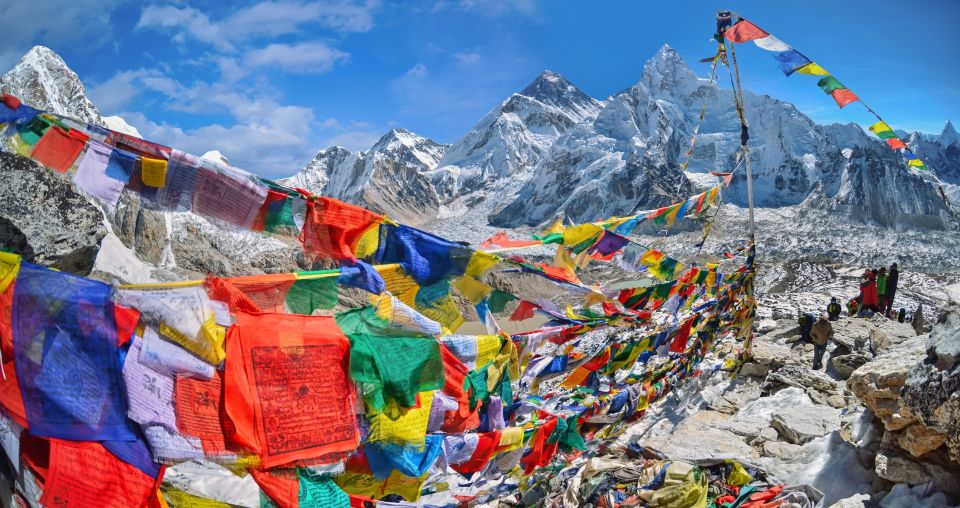
Are There Any Specific Physical Fitness Requirements or Training Recommended Before Embarking on the Everest Base Camp Trek?
Physical preparation is crucial for the Everest Base Camp trek. A training regimen focusing on cardio, strength, and endurance will help conquer the moderate to challenging terrain. Engage in regular exercises to build stamina and ensure an enjoyable trekking experience.
How Is Communication and Connectivity Along the Trekking Route? Is It Possible to Stay Connected With Family or Use Internet Services?
Along the Everest Base Camp trek, trekkers can communicate with family using local SIM cards for mobile connectivity. While internet access is limited, satellite phones are available for emergencies. Stay connected while soaking in the beauty of the Himalayas.
Are There Any Cultural or Religious Customs That Trekkers Should Be Aware of and Respect During Their Time in the Everest Region?
When trekking in the Everest region, trekkers should respect cultural etiquette and religious customs. It’s important to dress modestly, remove hats when entering temples, and ask permission before taking photos of locals or religious sites.
What Is the Availability of Medical Facilities or Emergency Services Along the Trekking Route? Is It Recommended to Have Travel Insurance That Covers High-Altitude Trekking?
Travelers should prioritize travel insurance that covers high-altitude trekking for emergencies like altitude sickness. Limited medical facilities are available on the Everest Base Camp trek. Prevention tips for altitude sickness include gradual acclimatization and hydration.
Are There Any Particular Wildlife or Environmental Conservation Guidelines That Trekkers Should Follow While in the Everest Region?
Trekkers in the Everest region should follow wildlife conservation guidelines by refraining from disturbing animals and preserving their habitats. Environmental guidelines include proper waste disposal, respecting local customs, and minimizing plastic use for a sustainable trekking experience.
Last Words
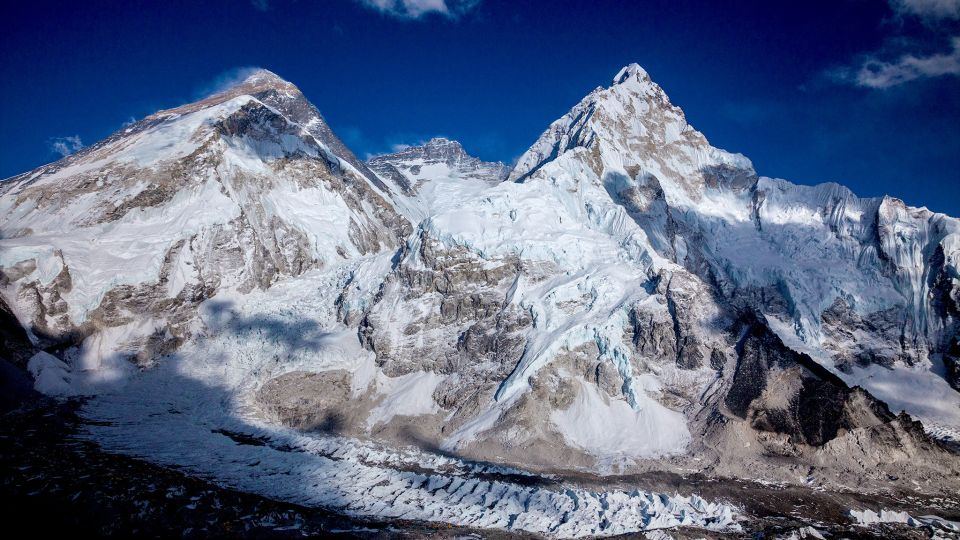
Embark on the Everest Base Camp Trek for an unforgettable 12-day adventure filled with breathtaking views and culture.
With cozy tea house accommodations, knowledgeable guides, and flexible options, this journey promises a safe and thrilling experience for all.
Witness the majesty of Mount Everest up close and create memories that will last a lifetime.
Don’t miss out on this incredible opportunity to explore the Himalayas and challenge yourself in the most rewarding way possible.